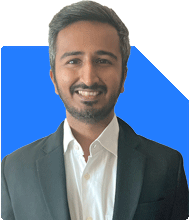I am 39 years old. I have two houses 3 flats in Delhi and 7 flats in Patna with around 45 thousand (can be increased) rental income. My salary is around 80 thousand Rs. 5 lakhs in MF. 5 lakh in bank. 7 lakhs in EPF. Monthly expenditure is 50 thousands. No life insurance. Medical insurance for all my family members. I have my parents wife and two kids in my family.
What are my investment options.
Ans: Your current financial status is quite stable, with multiple income sources and substantial savings. To help you plan better, I will provide a detailed guide on investment options, keeping your goals and requirements in mind.
Current Financial Overview
You have two houses and ten flats, providing a rental income of Rs. 45,000, which can increase. Your monthly salary is Rs. 80,000, and your monthly expenses are Rs. 50,000. You have Rs. 5 lakhs in mutual funds, Rs. 5 lakhs in the bank, and Rs. 7 lakhs in EPF. You have medical insurance covering your family. However, you lack life insurance.
Your family consists of your parents, wife, and two kids. Given this information, we will explore suitable investment strategies to secure your financial future and enhance your wealth.
Importance of Diversification
Diversification helps spread risk across different asset classes. Given your current portfolio, diversifying into various investments can help secure your financial future and reduce risks.
Emergency Fund
Before diving into investments, ensure you have an adequate emergency fund. An emergency fund should cover at least 6-12 months of your monthly expenses. With Rs. 50,000 in monthly expenses, your emergency fund should be between Rs. 3 lakhs to Rs. 6 lakhs.
Since you have Rs. 5 lakhs in the bank, this amount can serve as your emergency fund. It is easily accessible and safe.
Mutual Funds
Mutual funds are a great way to diversify your investments. They offer a mix of debt and equity options, allowing you to balance risk and returns. With Rs. 5 lakhs already in mutual funds, consider increasing this amount.
Actively Managed Funds: These funds are managed by professionals who aim to outperform the market. They are more flexible and can adapt to market changes. Avoid direct funds and invest through a Certified Financial Planner (CFP) to get expert advice and better fund management.
Debt Funds: These are less risky and provide stable returns. They are suitable for short-term goals and can be used for regular income through Systematic Withdrawal Plans (SWP).
Equity Funds: These have higher risk but offer higher returns. They are ideal for long-term goals like children's education or retirement.
Systematic Investment Plans (SIP)
SIPs are a disciplined way to invest in mutual funds. Investing a fixed amount regularly helps in averaging the cost and reducing market volatility impact. With your stable income, you can comfortably start a SIP.
Consider starting with a moderate amount and gradually increasing it. Since your rental income can increase, allocate a portion of this additional income to SIPs.
Public Provident Fund (PPF)
PPF is a safe and tax-efficient investment option. It offers good returns and has a long lock-in period, making it suitable for retirement planning. You can invest up to Rs. 1.5 lakhs per year.
Given your current financial status, allocating a portion of your income to PPF can provide long-term security and tax benefits.
National Pension System (NPS)
NPS is a government-sponsored pension scheme offering tax benefits and market-linked returns. It has two tiers:
Tier I Account: This is mandatory and has a lock-in period until retirement. It provides tax benefits under Section 80C and 80CCD.
Tier II Account: This is voluntary and allows for more flexibility in withdrawals.
Investing in NPS can help build a substantial retirement corpus while enjoying tax benefits. It complements your EPF and adds to your retirement security.
Gold
Gold is a good hedge against inflation and market volatility. Investing in gold can diversify your portfolio. You can invest in:
Gold ETFs: These track the price of gold and are traded on stock exchanges.
Sovereign Gold Bonds: Issued by the government, they offer interest and capital appreciation based on gold prices.
Digital Gold: This allows you to buy gold in small quantities and store it digitally.
Gold should be a small part of your portfolio, providing stability and protection against economic uncertainties.
Children's Education Planning
With two kids, planning for their education is crucial. Education costs are rising, and early planning can help manage these expenses.
Child Plans: These are insurance-cum-investment plans designed for children's education. They offer a lump sum at maturity, covering educational expenses.
Equity Mutual Funds: For long-term goals, equity funds can provide higher returns. Invest in a mix of large-cap, mid-cap, and small-cap funds to balance risk and returns.
SIPs: Start SIPs dedicated to education planning. Calculate the future cost of education and invest accordingly.
Life Insurance
Life insurance is essential for protecting your family's financial future. Without it, your family may face financial hardships in your absence.
Term Insurance: This is the most cost-effective insurance, providing a large cover at a low premium. It ensures financial security for your family in case of any unfortunate event.
Coverage Amount: Ensure the coverage amount is sufficient to cover your family's expenses, liabilities, and future goals. A rule of thumb is to have coverage of 10-15 times your annual income.
Health Insurance
You already have health insurance for your family, which is excellent. Ensure that the coverage amount is adequate to handle any major medical emergencies.
Top-Up Plans: If your current plan's coverage is low, consider a top-up plan. It provides additional coverage at a lower premium.
Critical Illness Cover: This covers specific critical illnesses and provides a lump sum on diagnosis. It can help cover high medical costs and loss of income during treatment.
Tax Planning
Efficient tax planning helps reduce your tax liability and increase your savings.
Section 80C: Utilize the Rs. 1.5 lakhs limit by investing in PPF, EPF, ELSS, and other eligible instruments.
Section 80D: Claim deductions for health insurance premiums paid for yourself and your family.
Section 80CCD: Get additional tax benefits by investing in NPS.
Home Loan Interest: If you have a home loan, claim deductions on the interest paid under Section 24(b).
Retirement Planning
With a stable income and multiple assets, planning for retirement is crucial.
EPF: Your EPF balance of Rs. 7 lakhs is a good start. Continue contributing to it for a secure retirement.
NPS: As discussed earlier, NPS is a great addition to your retirement plan.
Pension Plans: Consider pension plans that provide a regular income post-retirement. They help maintain your lifestyle and meet expenses.
Mutual Funds: Invest in a mix of equity and debt funds to build a retirement corpus. SIPs can help in systematic investment towards retirement.
Diversification in Investment Strategies
Balanced Funds: These funds invest in a mix of equity and debt. They offer stability and moderate returns. They are suitable for medium-term goals.
Multi-Asset Funds: These invest in multiple asset classes like equity, debt, and gold. They provide diversification and reduce risk.
Estate Planning
Estate planning ensures that your assets are distributed according to your wishes. It provides financial security for your family.
Will: Draft a will to specify how your assets should be distributed. It helps avoid disputes and legal complications.
Trusts: Setting up a trust can provide for your family and manage your assets efficiently.
Nomination: Ensure you have updated nominations for all your investments and insurance policies.
Regular Review and Monitoring
Regularly review your investments to ensure they align with your goals. Monitor their performance and make adjustments if needed.
Annual Review: Review your portfolio annually with a Certified Financial Planner. They can provide expert advice and make necessary changes.
Rebalance Portfolio: Rebalance your portfolio to maintain the desired asset allocation. It helps manage risk and optimize returns.
Final Insights
Your financial position is strong, and with proper planning, you can achieve your goals. Diversify your investments, focus on tax planning, and ensure adequate insurance coverage.
Consider working with a Certified Financial Planner for personalized advice and expert guidance. Regularly review and adjust your investments to stay on track.
With a balanced and well-diversified portfolio, you can secure your family's future and achieve financial freedom.
Best Regards,
K. Ramalingam, MBA, CFP
Chief Financial Planner
www.holisticinvestment.in

























.jpg)